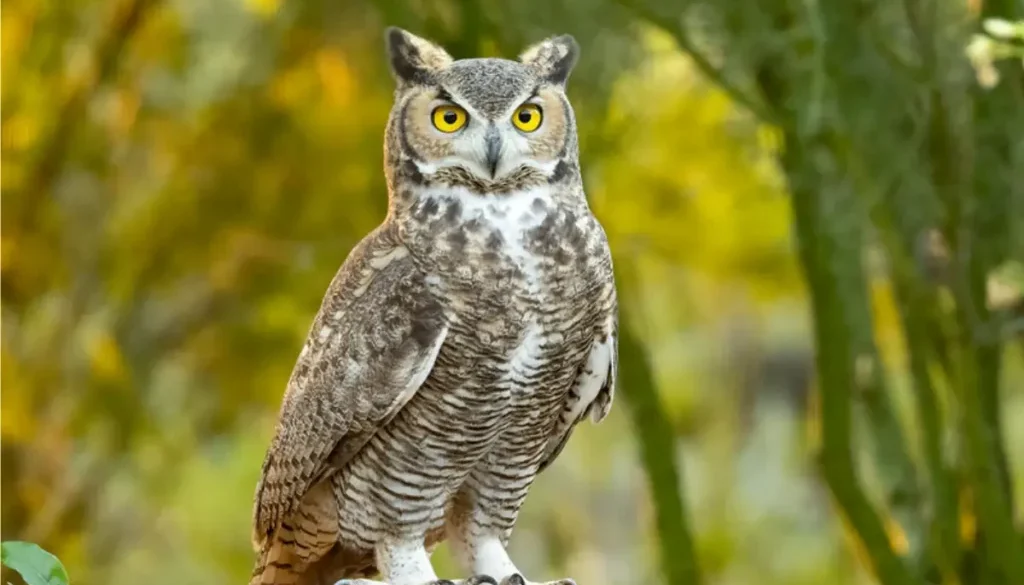Great Horned Owl (Bubo virginianus)
The Tiger of the Sky
The Great Horned Owl, often referred to as the “tiger of the sky,” is one of the most formidable and adaptable raptors in North America.
Distinctive Appearance
This large owl is easily recognizable by its prominent ear tufts, or “horns,” which are not actually ears but feather tufts that may help in camouflage and communication. The Great Horned Owl has a wingspan of 3.3 to 4.8 feet and weighs between 2 and 5.5 pounds, with females typically larger than males. Its plumage is mottled brown with a white throat patch and striking yellow eyes that give it a fierce appearance.
Diverse Habitat and Diet
Great Horned Owls are highly adaptable and occupy a wide range of habitats, including forests, deserts, wetlands, grasslands, and even urban areas. They are nocturnal hunters, relying on their excellent night vision and acute hearing to locate prey. Their diet is incredibly varied and includes mammals like rabbits, skunks, and rodents, as well as birds, reptiles, amphibians, and even insects. They are known for their ability to take down prey larger than themselves, using their powerful talons to deliver a crushing grip.
Behavior and Vocalization
These owls are solitary outside of the breeding season and are highly territorial. They are known for their deep, resonant hooting call, which can be heard over long distances, especially during the breeding season. Great Horned Owls do not build their own nests; instead, they take over the abandoned nests of other large birds, such as hawks, eagles, or crows, or use tree cavities and cliff ledges.
Nesting and Parental Care
The female typically lays 2 to 3 eggs, which she incubates alone while the male provides food. The young owlets fledge at around 9 to 10 weeks but may remain with their parents for several months.
Cultural Significance and Conservation
The Great Horned Owl is a symbol of power and mystery in various cultures. Despite being widespread and common, they face threats from habitat destruction, rodenticide poisoning, and collisions with vehicles. Nonetheless, their adaptability and broad diet have allowed them to thrive across much of their range, making them one of the most successful owl species in the Americas.

